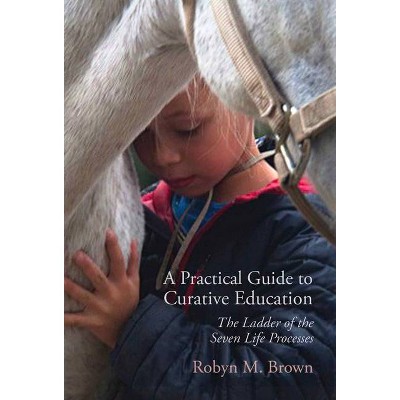Global Journalism Education In the 21st Century - by Robyn S Goodman & Elanie Steyn (Paperback)

Similar Products
Products of same category from the store
AllProduct info
<p/><br></br><p><b> About the Book </b></p></br></br>"Global Journalism Education in the 21st Century: Challenges and Innovations" sheds light on the present and future of journalism education worldwide and how to best prepare future journalists (and citizens) to cover the news. This one-stop text, reference book is a must-read for everyone interested in quality journalism education and practice.<p/><br></br><p><b> Book Synopsis </b></p></br></br><p><em>Global Journalism Education in the 21st Century: Challenges and Innovation </em>empowers journalism educators to strengthen the field of journalism by preparing students to "do journalism"--as citizens and/or journalists--in the most effective, professional manner possible.</p><p>This volume is a one-stop scholarly yet practical/approachable reference book for educators, trainers, journalists, media activists, policymakers, foundations, nongovernment organizations, students, and others with a vested interest in quality journalism. It sheds light on the emerging field of comparative journalism education worldwide by building on past research and offering conceptual, theoretical, empirical, and practical insights into where the field has been, where it currently stands, and where it seems to be heading.</p><p><em>Global Journalism Education</em>'s findings are based on the combined expertise of many of the world's top journalism education scholars through: </p><p>o Descriptive case studies highlighting journalism education and practice-related challenges and innovations in a wide range of countries from six continents;</p><p>o Conceptual chapters examining the past, present, and predicted future of global journalism education and its influence on the profession;</p><p>o Empirical case studies detailing classroom innovations worldwide;</p><p>o A concluding chapter with 10 global journalism education predictions; and</p><p>o An epilogue highlighting final observations regarding the current state of Western journalism education bias, ethnocentrism, and related provincial thinking and efforts to de-Westernize global journalism education and broaden journalists' understanding of the world they live in.</p><p> </p><p>CONTENTS: </p><p><strong>Part 1: </strong></p><p><strong>Global Journalism Education </strong></p><p><strong>Country Case Studies</strong></p><p><strong>1 Journalism Education in Australia </strong></p><p><strong>2 Journalism Education in Chile </strong></p><p><strong>3 Journalism Education in China </strong></p><p><strong>4 Journalism Education in Egypt </strong></p><p><strong>5 Journalism Education in India </strong></p><p><strong>6 Journalism Education in Israel </strong></p><p><strong>7 Journalism Education in Russia</strong></p><p><strong>8 Journalism Education in South Africa</strong></p><p><strong>9 The United Kingdom Juggles Training and Education</strong></p><p><strong>10 The Curious Case of U.S. Journalism Education </strong></p><p> </p><p><strong>Part 2: </strong></p><p><strong>Contextualizing Global Journalism Education</strong></p><p><strong>11 Taking Stock of Contemporary Journalism Education: </strong></p><p><strong>12 Going Global: </strong></p><p><strong>13 How Good Are We?: </strong></p><p> </p><p><strong>Part 3: </strong></p><p><strong>Global Innovations in Journalism Education</strong></p><p><strong>14 On Media and Entrepreneurship as Ways of Being in the World</strong> </p><p><strong>15 Pop-Up Newsroom </strong></p><p><strong>16 Going Mojo </strong></p><p><strong>17 When Alternate Reality and Real Reality Collide </strong></p><p><strong>18 Coding the Curriculum </strong></p><p><strong>19 Reconsidering News Production </strong></p><p><strong>20 Journalism Education's First Century</strong> </p><p><strong>Epilogue</strong> / <strong>Global Journalism Education Moving Forward </strong></p><p> </p><p><strong>Contributors</strong></p><p/><br></br><p><b> Review Quotes </b></p></br></br><br><p><strong>"This collection is a timely contribution to the understanding of the current state of journalism education, and its challenges and promises, across the globe. It also offers a treasure trove of information and insight into diverse media eco-systems. The book is an invaluable reference for educators in journalism and related disciplines."</strong><em> </em></p><p><em>-- Ying Chan, The University of Hong Kong</em></p><p> </p><p><strong>"Goodman and Steyn have assembled an impressive array of contributions that span all continents and provide great insight into where journalism education's future strength and challenges lie." </strong></p><p><em>-- Beate Josephi, University of Sydney</em></p><p> </p><p><strong>"In a period of multiple challenges this book brings precious information and helps to understand the trajectory, current situation, and outlooks for journalism and the status of journalism education in different parts of the world." </strong></p><p><em>-- Sonia Virgínia Moreira, State University of Rio de Janeiro, Brazil</em></p><p> </p><p><strong>"The impressive range of national cases . . . describes both a diversity of teaching approaches and shared challenges. . . . the editors have helped challenge educators to lead, disrupt, and innovate as we prepare students for life in the networked public sphere." </strong></p><p><em>-- Stephen D. Reese, University of Texas, Austin</em></p><p> </p><br>
Price History
Price Archive shows prices from various stores, lets you see history and find the cheapest. There is no actual sale on the website. For all support, inquiry and suggestion messagescommunication@pricearchive.us




















